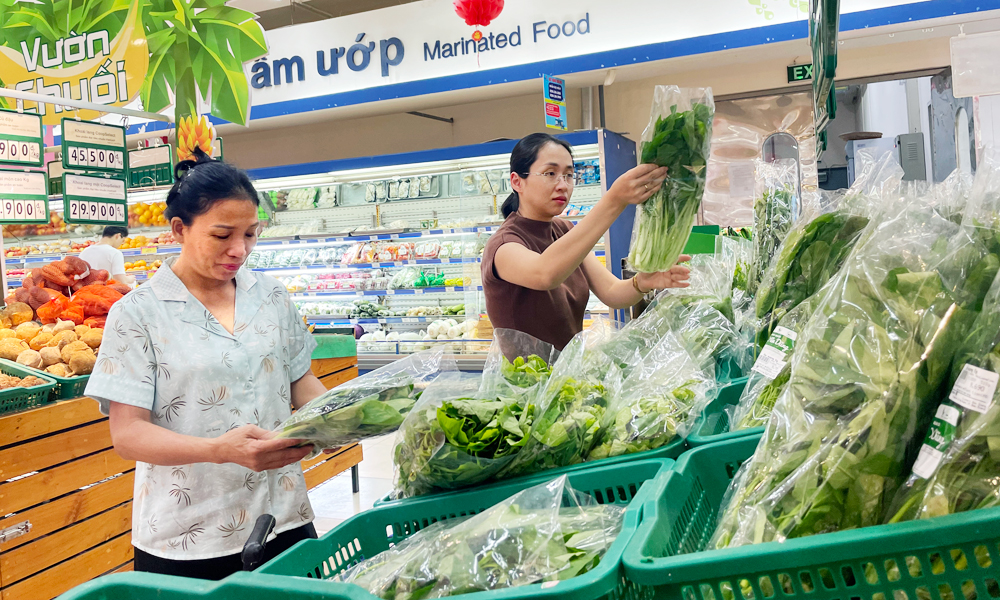Mobilizing social resources for relic restoration
Related news  |
Spacious works
On the morning of September 21, the People's Committee of Ninh Son commune (Viet Yen district) inaugurated the Noi Ninh Communal House, attracting a lot of people. Present here, Doan Van Duong from Ninh Son village said he feels very happy as the communal house is spacious and beautiful, offering a venue for the community activities of the local people.
 |
|
Noi Ninh Communal House is newly renovated. |
The Noi Ninh Communal House was built in 1692 to worship Saint Tam Giang. Over time, the communal house degraded. With the approval of the local Party committee and authorities as well as mass organizations, the management board of the Noi Ninh Communal House decided to invest in renovating the site.
After more than a year of implementation, the communal house was completed, including five front rooms and two back rooms. The total cost of restoration was over 16 billion VND (686,600 USD), mainly sourced from the local budget and people’s contributions.
|
Statistics of the provincial Museum show that 20-30 relics in the province are renovated each year. Typical works include Noi Ninh Communal House in Ninh Son commune (Viet Yen district); Xuan Bieu Pagoda in Xuan Cam commune (Hiep Hoa district); An Ha Pagoda in An Ha commune; and Dai Lai Pagoda in Huong Lac commune (Lang Giang district). |
Doan Van Thu, Chairman of the People's Committee of Ninh Son commune, said with excitement that “At first we did not think people actively supported the restoration of the communal house like that. Right after calling for donations, we received an active response from all families. Many local people working far away also sent money to repair the work”.
Previously, in Huong Lac commune (Lang Giang district), the management board of Dai Lai Pagoda also encouraged people to engage in repairing the pagoda. It is worth noting that the total renovation cost (over 1 billion VND or 43,000 USD) was contributed by the people.
According to Chu Van Thanh, deputy head of the board, the people actively supported the renovation and embellishment of the work. Thanks to their contributions, both the Dai Lai Pagoda and Communal House have been restored.
Publicity, democracy
According to the Provincial Museum, the mobilization of people’s contributions to renovating relics appeared more than a decade ago but recently, the movement has become more popular. If in 2004, people in the province contributed over 3 billion VND (128,700 USD), the amount of money mobilized hit nearly 40 billion VND (1.7 million USD) each year during the 2016-2017 period.
In fact, localities home to relics have mobilized social funds to repair their relics. Among those are Viet Yen, Lang Giang, Hiep Hoa, Yen Dung and Luc Ngan districts. Experience from the localities shows that to attract the active support of people, the mobilization must be open and democratic.
 |
|
Dai Lai Pagoda in Huong Lac commune after being restored. |
Prior to the innovation, permission must be obtained from competent authorities. According to Nguyen Thi Thanh Huyen, Deputy Director of the provincial Museum, during the mobilization process, most localities have set up a campaign and monitoring board. In the process of construction, the board supervised all stages from material purchase to implementation.
Besides local residents, including those working far away, many localities have also persuaded individuals and businesses based in the areas to support the restoration. Tran Van Loi, owner of a business in Viet Yen district who donated money to the repair of the Noi Ninh Communal House said: "We are very excited and proud when contributing to the construction of the work."
According to Nguyen Sy Cam, Deputy Director of the provincial Department of Culture, Sports and Tourism, the mobilization of people’s contributions to restoration and renovation of relics is necessary, but the localities must pay attention to management and use of funds in order to avoid wastefulness, loss and misuse. After renovating, management work should be done well to promote the value of relics, especially in educating historical and cultural traditions for people.
Thanh Hai
 Bắc giang
Bắc giang













Reader's comments (0)